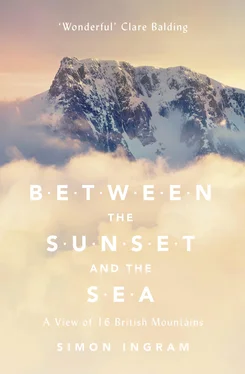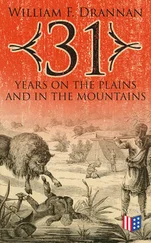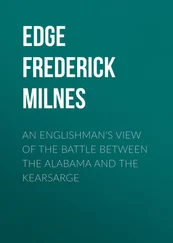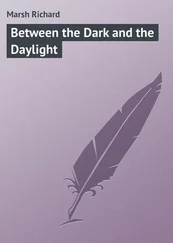The harmonic buzz of a deer grid beneath car tyres and a rinse of static over the radio accompanied my arrival into the long, broad scoop of Glen Torridon. To the right, stands of skeletal trees, their bark dead and grey, lined the lower slopes of Beinn Eighe – a monster of quartzite mountainside dominating the northern side of the glen for several miles. Its back is turned from this angle; you can’t see the drops, the falling arêtes, the dark gullies, the hidden valleys. As the beautiful sea loch that gives the glen its name approached, I began to feel myself moving from one realm to another as the radio weakened further, mobile phone reception died, and above me, the mountains of Torridon sharpened.
Cheerily weather-beaten, the houses of Torridon village cling to a single street between the water of the loch and the bottom of another mountain, Liathach. Liathach is long and tall, but tilted away from the road, like a mainsail in a crosswind. Like Beinn Eighe, all you see from the road is a languid slope, cut by rivulets of meltwater; hidden is the 800-metre fall of the north face, which the map assures us is there but which the eye cannot see from this vantage point. Like Glen Coe, there’s only a certain appreciation you can have from a car. The rest you have to earn by foot.
Beyond the village, I found the small car park amongst the woods of Inveralligin, where I’d parked with Tom in 2004. From here a twiggy path led along a series of waterfalls, turns and climbs, then broke out of the trees, following the river earnestly towards the mountains that fed it. Ahead, the outline of Beinn Dearg began to crisp into focus, from this perspective angular, almost trapezoidal. It looked interesting. It also looked weirdly unfamiliar, and it was only as the mountain’s broad base approached that I realised just how much I’d forgotten about the ascent. Last time, I was just being introduced by someone else to this place. I was a tourist. Now, alone, I was in charge.
I’d chosen Beinn Dearg as the first mountain in this little quest for several reasons. The first was that it was a mountain that exhibited the feeling of exposure – of raw height – to a spectacular degree. There are taller and steeper mountains, not just in Britain but in this immediate area, that could easily compete; but Beinn Dearg to me was the finest example, not least because it delivers in such an unexpectedly dramatic fashion.
How a mountain cuts its dash is, of course, down to its geology. The Torridon mountains, with the exception of Beinn Eighe – which, thanks to the convoluted mangling of British upland rock eschews the typical Torridonian sandstone top for a cap of crumbling white quartzite – have a particularly unsubtle way of climbing to their considerable elevations. Laddered with horizontal terraces of crags, glaciation and weathering have sculpted the flanks of these peaks into a distinctively consistent form: as they climb, they rise first steeply, then vertically, then steeply, then vertically. From high on the mountain, the experience of looking down this sloping-step structure is devastating: beyond tipped, slippery slopes of grass and loose rock, drops open. And these are big, convex drops, whose extent is hidden. It makes you feel like you’re sailing towards the edge of a waterfall.
The result is a stepped wall of mountain through which passage has to be found before you can stand on the top. In England, Wales and the higher, more travelled mountains of Scotland, many of these ways have been engineered, or walked so many times they are worn unambiguously into the mountainside. On Beinn Dearg, there are no such ways. Every side of the mountain is steep and outwardly impenetrable, and the way up is not obvious.
I was aiming to climb the mountain the same way as before as I was fairly sure it was the only realistic way up. But whilst I’d in effect be repeating my earlier ascent, I wouldn’t be repeating the weather – and that made a difference. Even a subtle shift in conditions can completely change a mountain’s character, and today’s mizzle was far from a subtle shift.
Down to the left of the path the river was surging. I could hear the hard ‘clock’ of boulders being spun and punched along its bed. Crossing it would be impossible on foot. Luckily, the last human augmentation to the landscape before the Bealach a’ Chòmhla – the high gap or bealach between Beinn Dearg and its tall, sheer neighbour, Beinn Alligin – is a bridge. Beyond, as the path’s thin ribbon began to climb, it started to rain. I looked up towards Beinn Dearg’s south-west face. Though the detail of its buttresses was softening in the drizzle, I could still see clearly what lay ahead. It looked so high, and steep: impossibly steep. I’d been up it before, and had no recollection of it being that difficult. Maybe distance would decode it; perspective in the mountains was tricksy, after all. Perhaps at the foot of the slope it would cease to resemble a wall and take on a kinder angle. As eyelash-hung raindrops began to quiver the mountain in my vision, I stooped my head and continued on, the soft gnaw of apprehension in my stomach.
As I got closer, the tiny grains of scree that hung around the lower slopes of the mountain like a valance grew into boulders, some the size of marrows, others the size of cars, the odd one the size of a house. A flicker of memory: had I climbed through this before? I scanned above, tracing a potential line of travel through the boulders onto the grassy shoulders and up, up onto the sharp skyline of the north-west ridge. Possibly. Possibly that would go.
The boulders were chaotically tall and grey, the grey of the cindered ruins of a bombed-out town. The sandstone was sharp and cold, the hard fabric of my trousers and jacket making a scratching sound as I brushed by. All of this must have fallen off the mountain at some point; what a terror it would be to see one of these boulders racing down this face. For the first time on this mountain, my hands touched rock. Using your whole body to move through terrain is less tiring than just using your legs, as well as being more engaging to the brain. Of course, it’s usually steeper, too – which has the benefit of gathering height beneath you briskly, although it quite literally has a down side. I found myself enjoying the crossing of the boulder field so much that I forgot to keep an eye on the drop opening quickly behind me. It was only when the ground underfoot pitched enough to give me a thoughtful moment that I noticed the features I’d passed were taking on the altered perspective that only comes from being several hundred feet above them. Streams and stodgy bogs were suddenly sinuous rivulets and sky-mirrored pools interlocking with a messy elegance. I refocused upwards. Looking along the edge of the mountain, I could see that I was approaching a band of crags – the first of several that ran laterally across the mountain like taut waist-belts. After the ease of the boulder field, the way ahead was all of a sudden daunting. This was where things got interesting. This was where the mountain began.
What constitutes the ‘special quality’ of the British mountains is a big question, but it’s one worth asking. To engender such wide-ranging respect and affection – and they do, as we shall see – whatever it is, they must have it in spades. And it certainly isn’t height; not height in the numerical sense, anyway.
First, though, there’s the matter of exactly what qualifies as a mountain . People argue all the time about this. They kick numbers around, use terms like ‘prominence’ and ‘relative height’, quibble over a metre here, a foot there, and get sniffy about certain hills because they don’t hit a certain all-important benchmark. But in my book – and this is my book – it’s all a bit unnecessary. Mountains were never meant to be specific; they’re chaotic, and all about feeling and aesthetics. If it looks like a mountain and it feels like a mountain, then it is a mountain.
Читать дальше












